By Rick VanSickle
He is smiling from ear to ear as the first bottle of Le Clos Jordanne Le Grand Clos Pinot Noir 2017 jiggles down the bottling line at the Jackson-Triggs winery in Niagara-on-the-Lake on Monday.
Thomas Bachelder, the original winemaker for Arterra’s newly resurrected premier Pinot Noir and Chardonnay project, is in his happy place, working again with the impeccable vineyards that gave rise to some of this country’s most profound and beautiful wines ever made. The band is back together after the project was shelved five years ago with the 2012 vintage (Sébastien Jacquey, now at Megalomaniac, made the last vintage). And the bandleader couldn’t be happier.
For the story of why the Le Clos project ended, go here
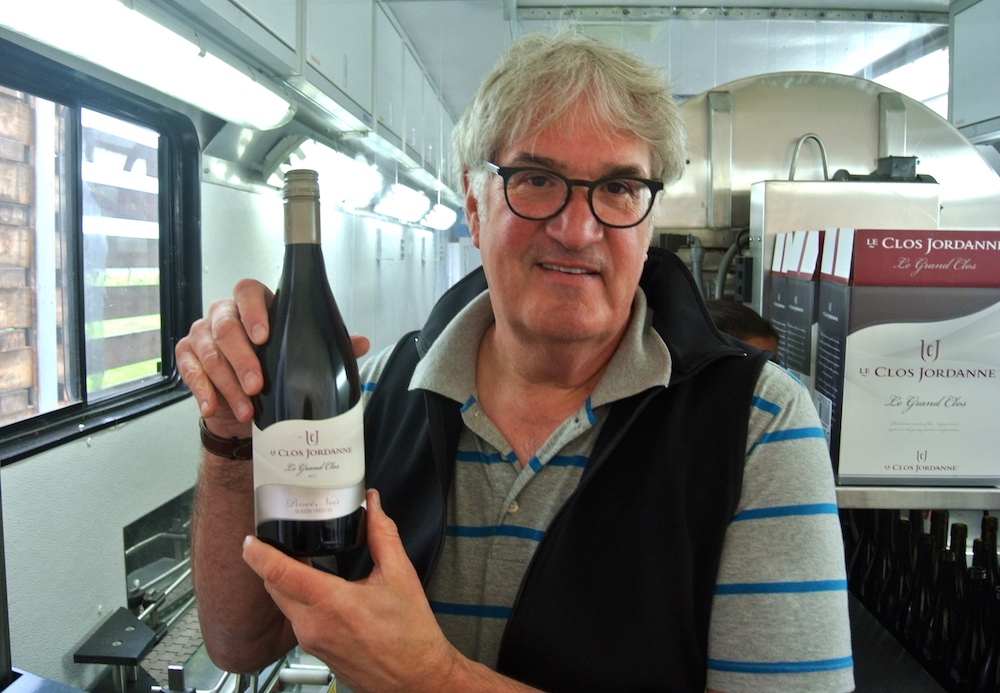
This morning (Thursday) at 9 a.m., Bachelder was joined by Arterra viticulturalist Gerald Klose and Arterra’s Andrea Hunt, senior vice-president of marketing, at the vineyard in Jordan to make it all official. Le Clos has been reborn with two wines from the 2017 vintage — the Le Grand Clos Pinot Noir and Le Grand Clos Chardonnay. The 2018s are safely in barrel at the Jackson-Triggs winery.
The Pinot was only bottled Monday while the Chardonnay, which will be poured at this year’s i4C, was bottled a while ago. For tickets to i4C, go here
The resurrected project sticks to the previous distinctive branding with one striking difference — both the Pinot and Chardonnay are bottled with under Stelvin (screw caps).
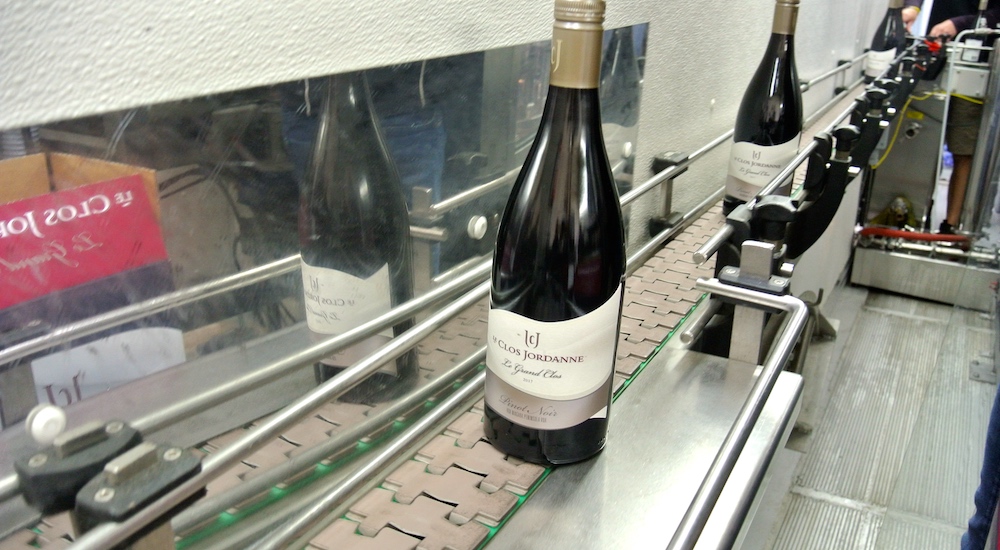
Bachelder explained that the wines will be essentially made in the same way he made them originally with subtle differences such as not stirring of the lees on the Chardonnay, to keep them lean, and picking them earlier to retain that taut minerality so prevalent in the Jordan vineyard. For the Pinots, he is less concerned with colour than he was previously and more interested in not over-extracting the fruit.
Wines In Niagara was invited to capture the first Pinot Noir coming off the bottling line Monday. Bachelder was like a nervous dad as that first bottle came off the line. He grabbed it gently and hand-wrote #1 on the bottle to mark the first Le Clos Pinot since 2012. It was a quietly joyous moment for Bachelder, who never gave up the dream of Le Clos being reborn.
“It’s great to start with a classic year (2017) with some older vines,” Bachelder said.
“I’ve been anticipating this since six months before the 2017 vintage when we hooked up with each other (Arterra and Bachelder) and it’s nice to see your babies go to high school and now college,” he said.
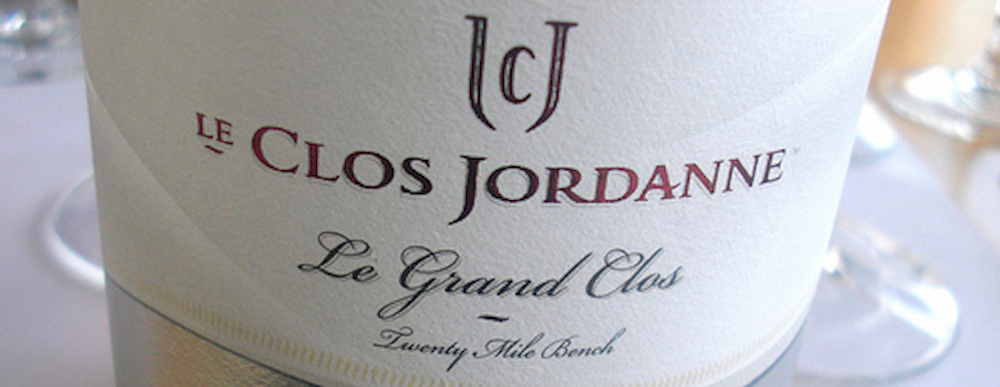
I, too, dreamed of the Le Clos project coming back from the dead and this website has written many stories pleading with Arterra to bring it back. See this story here
Beginning with the 2004 vintage, Le Clos Jordanne produced some of this country’s most-esteemed Pinot Noirs and Chardonnays in several single-vineyard tiers plus village. At the news conference today, Arterra Wines announced the rebirth of these internationally-acclaimed wines, in partnership with Le Clos Jordanne’s original winemaker, Bachelder, who also makes wine under his own label from Niagara, Burgundy and Oregon as well as Domaine Queylus wines in Niagara.
Single-vineyard, Burgundian-style Chardonnay and Pinot Noir wines will officially be released by Le Clos Jordanne in November 2019.
Le Clos Jordanne was originally founded with the goal of producing ultra-premium wines expressive of the unique terroir of the Jordan Bench. The vineyards were planted with rootstock imported directly from Burgundy and low-yield vines were harvested using an unhurried approach — hand-picked, hand-sorted and moved using a gravity flow system that ensured careful handling. These techniques, combined with Bachelder’s personal expertise in cool-climate winemaking, helped create wines that truly raised the bar on quality for the Canadian wine industry and put the Niagara region’s distinct terroir on the world wine map.

“As a Canadian company, it is so important for us to rebirth Le Clos Jordanne, to bring the well- deserved prominence of this vineyard back into the Canadian spotlight,” said Jay Wright, president and CEO (above photo), Arterra Wines Canada. “Our goal is to re-introduce wines expressive of this very special place — and there is no better person to bring this vision to life than Thomas Bachelder, with his unparalleled passion for this region and this vineyard.”
The ‘clos’, or enclosed vineyard, of Le Clos Jordanne is surrounded and sheltered by the Carolinian forests and their glacial ravines. The limestone-laced, silt and clay glacial soils are known for bringing intensely-focused fruit, minerality and age-ability to the wines produced there.
“Le Clos Jordanne holds what is arguably one of the top-sites in Canada for Pinot Noir and Chardonnay, “said Bachelder. “I’m incredibly grateful to have the opportunity to return to this vineyard and reignite what I’ve always considered to be my passion project, with the goal of producing the highest quality wines from this region.”
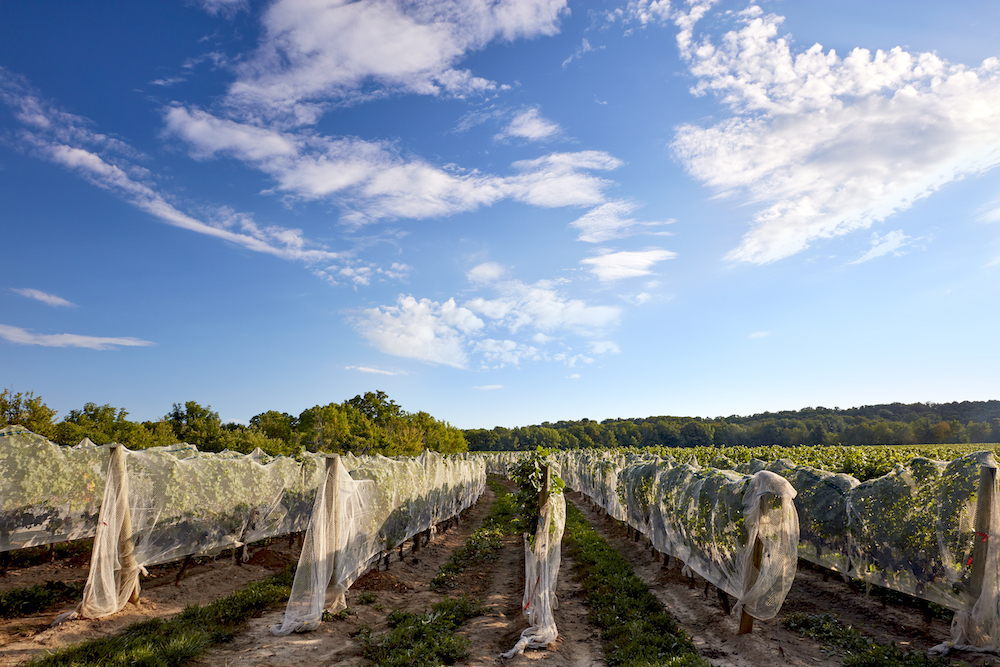
The idea to bring back Le Clos was something percolating with Arterra for a number of years. In May, 2017, Wright had a casual encounter with Bachelder at the Vancouver International Wine Festival. “He said let’s make some magic together,” said Bachelder. At that time, it was far from a plan, other than Arterra wanted to make use of the key Le Clos vineyards, whether it was for a reborn Le Clos or branded under a different label.
When Wright said to Thomas: “Would you like to work with that vineyard again?” Bachelder didn’t hesitate. “Well, yeah.
“We didn’t know back then what it would be,” but barrels were ordered and plans were moving forward with the 2017 harvest looming. It wasn’t until after the 2018 harvest was in the cellar it became clear that Arterra wanted to bring back the Le Clos label.
For Bachelder, it did not matter if it was Le Clos or some other name, the key for him has always been about the grapes. “Whatever the project was, it was always Le Clos grapes,” he said. “And it’s wonderful.”
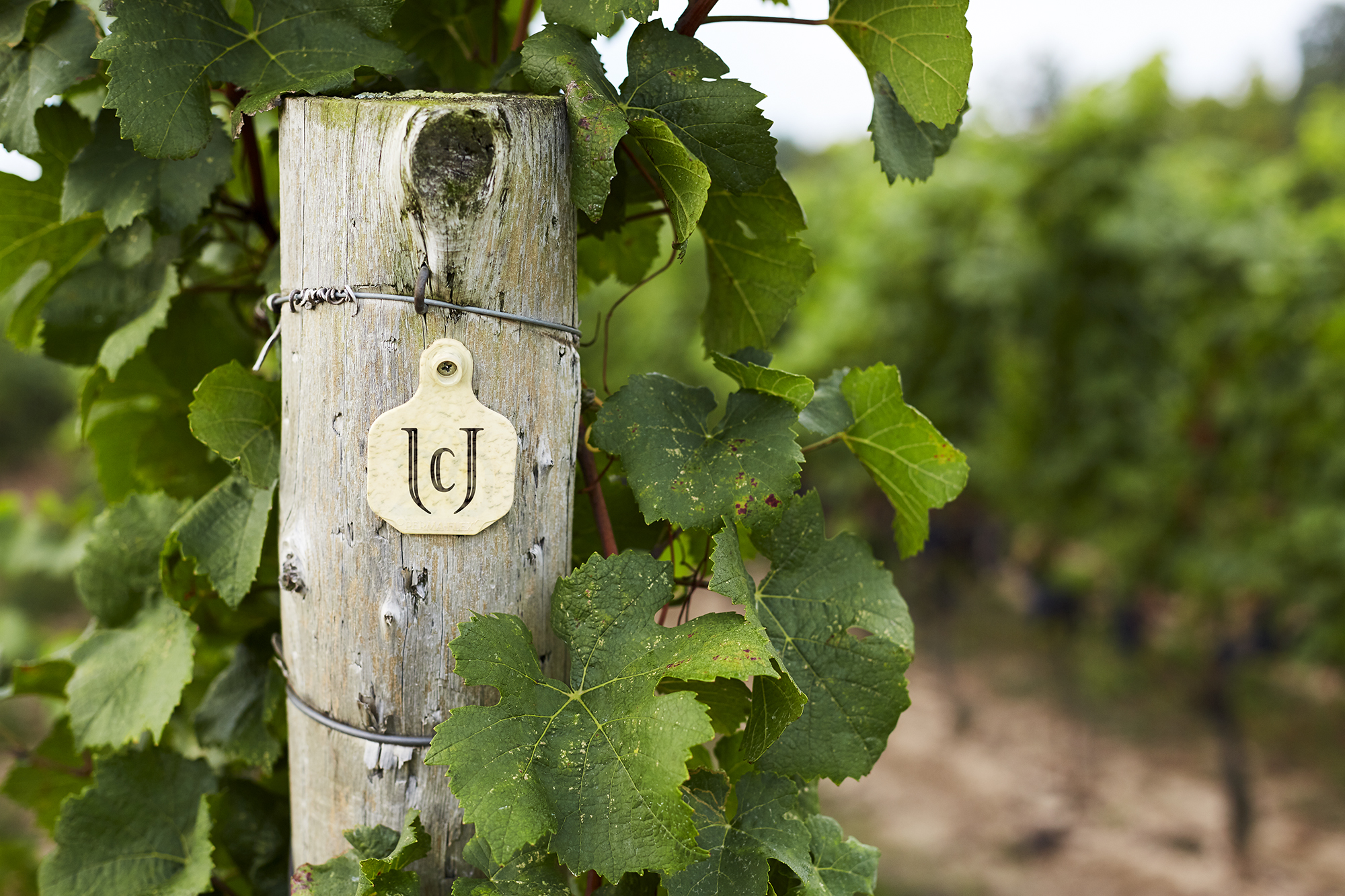
Le Clos Jordanne’s limited-edition Le Grand Clos Pinot Noir and Chardonnay will be released in late November at a price of $45 and will be available for purchase in Ontario via LCBO Vintages and in Quebec via the SAQ. The Chardonnay will be poured at i4C in July in Niagara. Both varietals will also be available for purchase online at www.leclosjordanne.com.
About the Le Clos
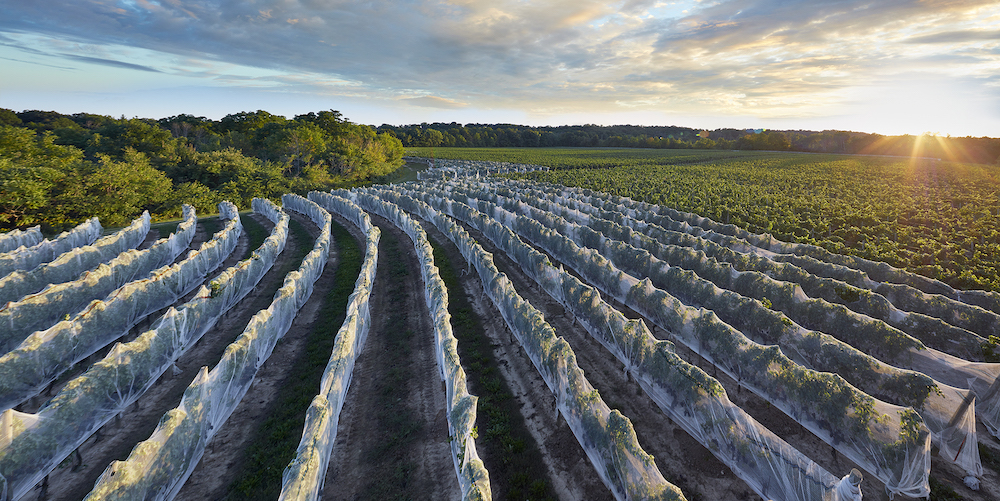
Le Clos Jordanne was a Franco-Canadian winemaking collaboration between Vincor Canada (now Arterra Wines Canada) and the Famille Boisset of Burgundy. Inspired by an earlier venture between the co-founders of Inniskillin Wines and French wine producer Jaffelin, the goal of Le Clos Jordanne was to produce ultra-premium, Burgundian-style Chardonnay and Pinot Noir, expressive of the unique terroir of the Jordan Bench.
Canadian winemaker Thomas Bachelder spearheaded the original project, building on the cool-climate, low-intervention, terroir-revealing winemaking techniques he had developed during years spent making wine in Burgundy and Oregon. Le Clos Jordanne produced only Pinot Noir and Chardonnay — using just the thin-skinned but regally perfumed Pinot Noir and luscious, yet mineral Chardonnay grapes, both with the potential to beautifully express the conditions in which they were grown.
The vineyards, hand-selected for their similarities in both their climate and the clay and limestone-rich soil to Burgundy’s Côte d’Or, were planted with ultra-premium rootstock imported directly from Burgundy. The low yield vines were harvested using an unhurried approach — hand-picked, hand-sorted and moved using a gravity flow system that ensured careful handling. These techniques, combined with Bachelder’s expertise in cool-climate winemaking, led to wines that truly raised the bar on quality for the Canadian wine industry.
The first batch of Le Clos Jordanne wines were released in 2007 to great critical acclaim. In 2009, the 2005 Claystone Terrace Chardonnay generated global praise after winning first place in the Judgment of Montreal competition, showing the truly exceptional capabilities of the Niagara region and beating out favoured competitors from France and California. It was only the second wine Le Clos produced.
Plans were in place to build Le Clos Jordanne into the flagship winery of the Niagara region, which included a Frank Gehry-designed building. Unfortunately, after much planning, the project was cancelled and the site of the building was used to plant more vines. Le Clos Jordanne continued to produce critically acclaimed wines until a few consecutive years of short crops led to its eventual closure in 2016.
In June 2019, Arterra Wines Canada announced they have partnered with Thomas Bachelder to rebirth Le Clos Jordanne, and bring the prominence of this great vineyard back into the Canadian and international spotlight. With a renewed focus on and attention to the Niagara region’s unique terroir, Le Clos will continue to produce Burgundian-style New World Pinot Noir and Chardonnay with finesse, complexity and elegance.
About Thomas Bachelder
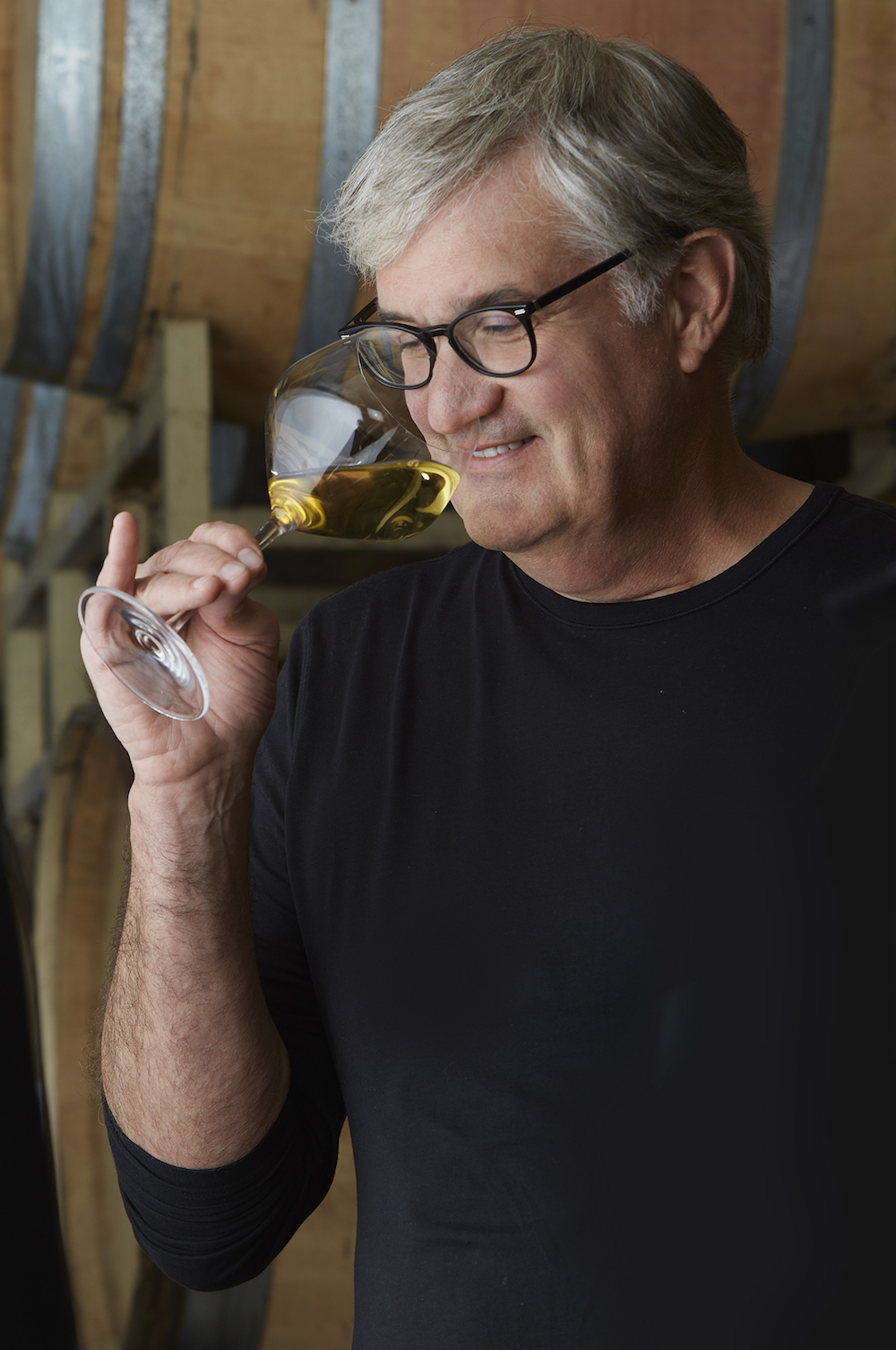
Thomas Bachelder is an internationally recognized Canadian winemaker — and Le Clos Jordanne’s original founding winemaker — with a speciality in the production of cool-climate Pinot Noir and Chardonnay. His terroir-revealing wines with distinct, complex minerality helped to propel a young Niagara region into the global spotlight in the mid to late 2000s. His efforts were instrumental in showcasing how old world, Burgundian winemaking techniques employed on new world terroir — with minimal intervention — could produce exceptional wines.
Originally from the dairy farming belt east of Montreal, Quebec, Thomas grew up on his family’s farmland, helping to foster a love of agriculture from a young age. In 1985, Thomas was first introduced to winemaking when he received a “Beaujolais-style” home winemaking kit for Christmas. Originally interested in winemaking as a hobby, it was his honeymoon trip to Burgundy with his wife, Mary Delaney, who inspired him to become a full-time winemaker.
His career began in 1992 when he moved to Burgundy to work as a winemaking assistant for two esteemed Domaines, Domaine de la Créa, Bligny-lès-Beaune and Domaine Marius Delarche, Pernand-Vergelesses. Following this and a stint in Oregon, he was invited back to Burgundy to join the historic Château Génot-Boulanger where he was able to introduce some new world winemaking notions, into one of the old world’s most traditional villages. A move back to Oregon in the late 90s saw Bachelder create some of the greatest Pinot Noirs in the state during four vintages at Lemelson Vineyards.
In 2003, Bachelder became the founding winemaker of Le Clos Jordanne. Enamoured by the Burgundy region, Bachelder had been hesitant about making wine in Ontario, but he quickly fell in love with the unique nature of the project and the limestone-laced, micro-climate of the Jordan Bench. Le Clos Jordanne became a passion project and he viewed it as an incredible opportunity to put Canada on the winemaking map.
Leveraging a decade’s worth of experience obsessing over the marriage of new and old world techniques, Bachelder and Le Clos Jordanne won almost immediate attention and praise. In 2009, the 2005 Claystone Terrace Chardonnay generated global recognition after winning first place in the Judgment of Montreal competition. It was only the second wine he had produced at Le Clos, earning Bachelder Winemaker of the Year in that year’s Ontario Wine Awards.
Bachelder left Le Clos Jordanne in 2010 and continued to produce world-class examples of cool-climate wines in Oregon, Burgundy and Niagara, under his own label, Bachelder. He recently added a new varietal, Gamay, to his portfolio. His technique continues to showcase the personality of the region, with little winemaker intervention and extended time in the barrel. Now, Bachelder will return to execute the rebirth of Le Clos Jordanne, bringing with him his immense knowledge of this particular vineyard, his passion for the region and his unique, terroir-focused style.
Note: Some of the information in this post, as well as exclusive access to Bachelder and the bottling line, was provided to Wines In Niagara in advance of the news conference Thursday. The information was embargoed until 9 a.m. Thursday. That embargo was honoured.






Comment here